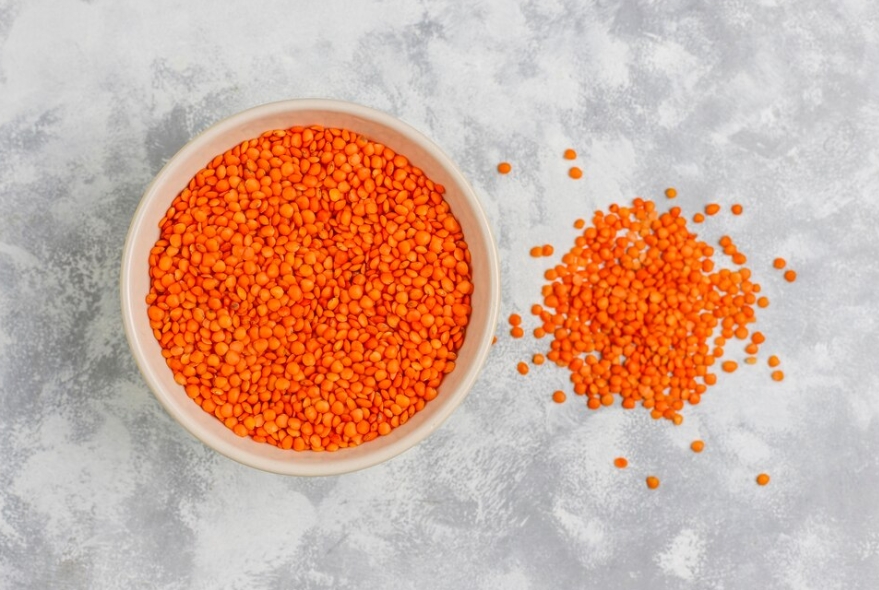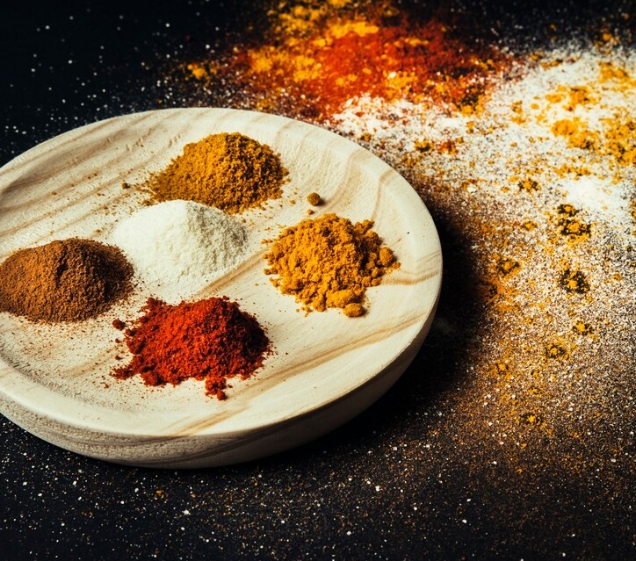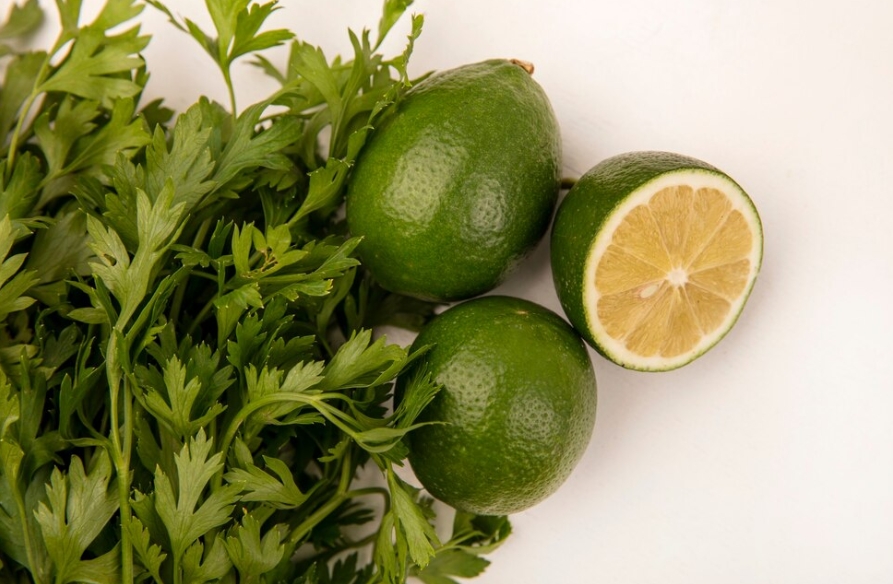What You Can Learn From This Recipe
Discover how to use aromatics like onions, garlic, and ginger to create a tasty base and how to temper spices (tadka). Additionally, this recipe shows you how to make lentils the ideal creamy consistency.
What I Love About This Recipe
Red lentil Dal is a favorite because of its ease of use and adaptability. It’s nourishing, incredibly fulfilling, and customizable to your preferences. This recipe is a favorite for any day of the week because of its cozy texture and balance of spices.
What’s the Best Way to Store Leftovers?
Any leftover dal can be kept in the fridge for up to three days in an airtight container. Adjust the consistency by adding water as necessary and reheating gently on the stovetop or in the microwave.
What to Serve With It
Serve this dal with Indian flatbreads like roti or naan, or with steaming basmati rice or jeera rice. A mango pickle or cucumber raita on the side gives the dish a cool contrast.
Red Lentil Dal: Comfort Manifested
Description
The Indian subcontinent is the origin of the comforting cuisine red lentil daal. This flavorful vegetarian treat consists of red lentils cooked with a blend of spices, including earthy turmeric and aromatic cumin. It's a healthy and adaptable recipe that may be served as a side dish or as a main course. Whether served with soft flatbreads or fluffy basmati rice, Red Lentil Dal is a celebration of flavor and simplicity, providing a wholesome, easy-to-make, and universally enjoyed dish.
For the Dal
For the Tadka (Tempering)
Garnish
Instructions
Prepare the Lentils
-
- Rinse the red lentils thoroughly under running water until the water runs clear.
- In a pot, combine the lentils and water.
- Add turmeric and a pinch of salt.
- Bring to a boil, then reduce the heat to medium.
- Simmer for 15–20 minutes, stirring occasionally, until the lentils are soft and creamy.
Sauté the Base
-
- In a separate pan, heat up 1 tablespoon of oil or ghee(we prefer).
- Add the onions and cook until golden brown.
- Stir in the garlic, ginger, and green chili, cooking for 1–2 minutes.
- Add the tomatoes and cook it until they break down and form a thick paste, about 5 minutes.
Combine and Simmer
-
- Add the cooked lentils to the onion-tomato mixture.
- Stir in cumin, coriander powder, garam masala, and chili powder.
- Simmer for another 5 minutes, adjusting salt and water as needed for your desired consistency.
Make the Tadka
-
- Heat 2 tablespoons of ghee or oil in a small pan.
- Add mustard seeds and let them pop.
- Stir in cumin seeds, dried red chilies, curry leaves, and asafoetida.
- Cook for 30 seconds.
- Pour the tadka over the dal and mix well.
Garnish and Serve
-
- Garnish the dal with fresh cilantro and serve hot with rice or flatbreads.
- Add a squeeze of lemon for a tangy finish.
Nutrition Facts
Servings 4
- Amount Per Serving
- Calories 250kcal
- % Daily Value *
- Cholesterol 35mg12%
- Sodium 350mg15%
- Total Carbohydrate 35g12%
- Dietary Fiber 10g40%
- Protein 10g20%
* Percent Daily Values are based on a 2,000 calorie diet. Your daily value may be higher or lower depending on your calorie needs.
Note
- Adjust the spice levels by reducing or omitting the green chili and red chili powder.
- For a creamier texture, you can blend part of the cooked lentils before adding them to the onion-tomato mixture.
- Leftovers can be refrigerated for up to 3 days and reheated with a splash of water to adjust consistency.
Journey of Red Lentil Dal
A Legacy Steeped in Simplicity and Nourishment
"Masoor Dal," also known as red lentil Dal, is a staple of South Asian cooking. Respected for its nutritional content, adaptability, and simplicity, it has risen above its modest beginnings to become a favorite around the world. With its rich flavors and creamy texture, the meal tells a tale of cultural significance and agricultural tenacity while representing comfort food to millions of people.
The Origins of Lentils and Their Culinary Legacy
Since more than 8,000 years ago, people have been growing lentils, including the vivid red type. Lentils were among the first crops that humans domesticated, with archeological evidence linking their origin to the Fertile Crescent. Through trading channels, they made their way to South Asia over ages, where they established themselves as a staple food.
Dal is more than just a dish in Indian homes; it's a staple of everyday meals. Because of their rapid cooking time and flavor-absorbing capacity, red lentils in particular are preferred. Red lentil daal developed as a dish of convenience, incorporating the flavors that characterize Indian cooking and offering nourishment in a single pot.
Cultural and Spiritual Significance
Dal has a particular role in South Asian cuisine and spiritual rituals. Dal is regarded in Ayurveda as a "sattvic" dish that promotes balance and health. Because of its vivid color, red lentil dahl is frequently offered at religious ceremonies and festivals as a sign of plenty and purity.
Dal crosses social divides throughout the region. It is a common comfort at both opulent feasts and modest dinners in rural houses. The dish's timeless appeal is highlighted by its inclusivity—it is for everyone.
Key Ingredients That Shape Red Lentil Dal
The simplicity of Red Lentil Dal is its essence. The canvas is made of the lentils themselves, which have a subtle, somewhat sweet flavor. While spices like turmeric, cumin, and coriander add warmth and scent, onions, tomatoes, ginger, and garlic add depth and tang.
"Tadka," or tempering, is the distinguishing factor. The dal is topped with a fragrant mixture of curry leaves, mustard seeds, and dried red chilies that have sizzled in hot ghee or oil, elevating the meal with a symphony of aromas.
Evolution Through Time
Red lentil Dal's basic recipe hasn't changed, but there are many regional and individual variations. For added richness, a spoonful of cream may be added in northern India. For a sour edge, southern versions may incorporate tamarind or coconut milk. Dal has visited Nepal, Sri Lanka, and even the Caribbean outside of India, each of which has added its own distinct flavor.
As plant-based diets have become more popular, Red Lentil Dal has become more well-known worldwide in recent years. Vegetarians and vegans love it for its pleasing flavor profile and high protein content. Dal is currently served as a gourmet choice in restaurants all over the world, either alongside artisanal breads or as a component of contemporary fusion cuisine.
Modern-Day Relevance
Red lentil dahl is now a representation of sustainable eating. Because they need less water and add nitrogen to the soil, lentils are a crop that is good for the environment. The common lentil provides a model for resilient agriculture as the globe struggles with food security and climate change.
Dal is a meal that fosters connections in addition to sustainability. Its scent connects history and contemporary by bringing back memories of shared meals and family kitchens. Making dal serves as a reassuring reminder of home and a means for South Asians living overseas to re-establish a connection with their heritage.
Fun Facts About Red Lentil Dal
Since they were first domesticated between 7,000 and 8,000 BCE, lentils are among the oldest crops.
The world's biggest producer and consumer of lentils is India.
Because they are split and hulled, red lentils cook more quickly than other types, which makes them perfect for quick meals.
A Dish That Speaks to the World
The red lentil Dal's adaptability and resonance are what give it its ongoing appeal. The dish embodies the spirit of simplicity and sustenance, whether it is served as a ceremonial offering or as a weeknight meal. It demonstrates how simple ingredients can produce remarkable flavors, demonstrating that great cooking is about attention to detail rather than complexity.
I appreciate you reading.
More than just a dish, Red Lentil Dal is a tale of community, creativity, and legacy. We appreciate you joining us in exploring its journey. The next time you have a bowl of dal, let it serve as a reminder of its lengthy history and the generations of hands who have prepared it.










